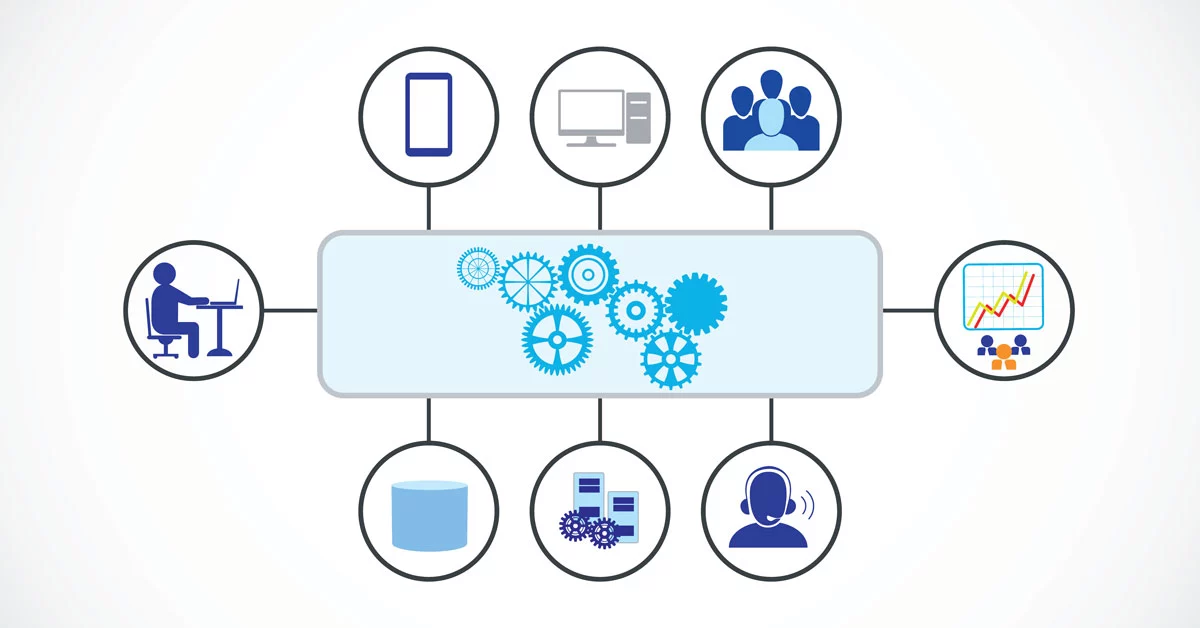
What Are Microservices And Do I Need Them?
By Thayer Tate
The term microservices has been around for nearly a decade and the approach has gained popularity with many tech giants. Many organizations have taken notice and are trying to make the switch, but it’s a challenge for them. Switching from the traditional architectures to microservices requires a big change in perspective and workflow throughout an organization. They need to embrace agility, scalability, and the ability to work in parallel to various workstreams.
If your organization has tried to make the switch to microservices and struggled to do so, you may wonder if it’s worth it. Does your organization really need microservices? Let’s take a closer look.
What is microservice architecture?
Microservice architecture, or microservices, is a variant of service-oriented architecture (SOA) for developing large applications. Tech Target defines it as “an approach to application development in which a large application is built as a suite of modular components or services.” Each component is continuously developed and maintained, making it easier to develop and maintain the larger application. (Contrast that to monolithic architectures, where the entire application is developed and maintained in one piece.)
Companies have been moving towards microservices because it lets them be more agile in terms of application development and reduces the time it takes to get enhancements or fixes to production. Microservices has been a boon to large enterprise applications, which are now developed by teams of geographically and culturally diverse developers.
What are the benefits of microservices?
Microservices offer a number of benefits to companies, both large and small.
1. Simplicity and agility
Applications built with microservices are easier to build and maintain because they’re split into a set of smaller, composable fragments. Code management is less painful because each microservice is a separate chunk of code. Services can be implemented with different programming languages, databases, and software environments.
2. Higher resiliency
Any problem will typically not influence the entire application or system through resiliency patterns like bulkheads and circuit breakers. When an error or failure happens in an individual microservice, it can be handled relatively quickly because it’s not affecting the entire system. Troubleshooting and fixes are handled more easily and efficiently with less downtime.
3. Autonomous cross-functional teams
Today’s companies, both large and small, often deal with geographically separated development teams. Microservice architecture grants developers more independence to work autonomously and make technical decisions more quickly without blocking others.
4. Innovation
Microservice development teams are organized around business capabilities and products, rather than technologies. This means services are adaptable for use in multiple contexts and a variety of products or business channels. Teams can innovate more easily because they have access to the best technology for the situation.
5. Scalability
As a company’s tech stack evolves into a truly hybrid environment that includes both on-premise and cloud solutions, it becomes challenging to create applications that can straddle them all. Because microservices can be developed with individual technologies, you can select the most appropriate one for your stack. You can add new components to your system more easily and scale services separately from each other. The built-in resiliency of microservice architecture means you’ll avoid overloading your system at any point while enjoying the same efficiency.
6. Higher return on investment
When using microservices, your company will enjoy a higher return on investment and a better total cost of ownership through faster development times. You’ll also be able to use a mix of hardware and software to support your applications, allowing you to save money on acquisition costs when needed.

Microservices offer a unique opportunity for companies looking to develop large applications. They’ll make development and maintenance easier, increase productivity, offer technical flexibility and scalability, and are great for distributed teams.
For those of you developing large, complex software, microservice architecture is the way to go.
If you’re looking to find the perfect development partner for your organization, check out this short guide. We’ve got a three-question checklist that’ll help.
Thayer Tate
Chief Technology Officer Thayer is the Chief Technology Officer at SOLTECH, bringing over 20 years of experience in technology and consulting to his role. Throughout his career, Thayer has focused on successfully implementing and delivering projects of all sizes. He began his journey in the technology industry with renowned consulting firms like PricewaterhouseCoopers and IBM, where he gained valuable insights into handling complex challenges faced by large enterprises and developed detailed implementation methodologies.
Thayer is the Chief Technology Officer at SOLTECH, bringing over 20 years of experience in technology and consulting to his role. Throughout his career, Thayer has focused on successfully implementing and delivering projects of all sizes. He began his journey in the technology industry with renowned consulting firms like PricewaterhouseCoopers and IBM, where he gained valuable insights into handling complex challenges faced by large enterprises and developed detailed implementation methodologies.
Thayer’s expertise expanded as he obtained his Project Management Professional (PMP) certification and joined SOLTECH, an Atlanta-based technology firm specializing in custom software development, Technology Consulting and IT staffing. During his tenure at SOLTECH, Thayer honed his skills by managing the design and development of numerous projects, eventually assuming executive responsibility for leading the technical direction of SOLTECH’s software solutions.
As a thought leader and industry expert, Thayer writes articles on technology strategy and planning, software development, project implementation, and technology integration. Thayer’s aim is to empower readers with practical insights and actionable advice based on his extensive experience.







